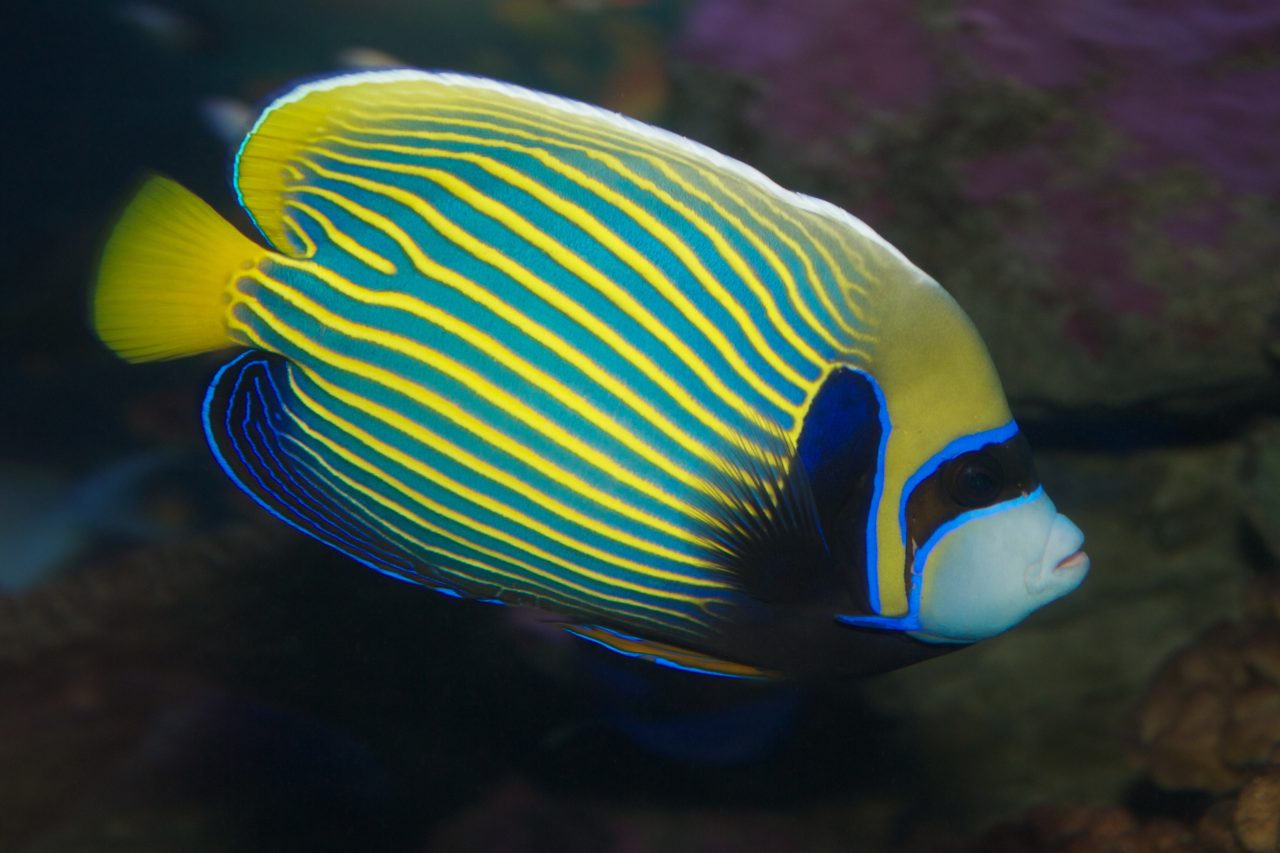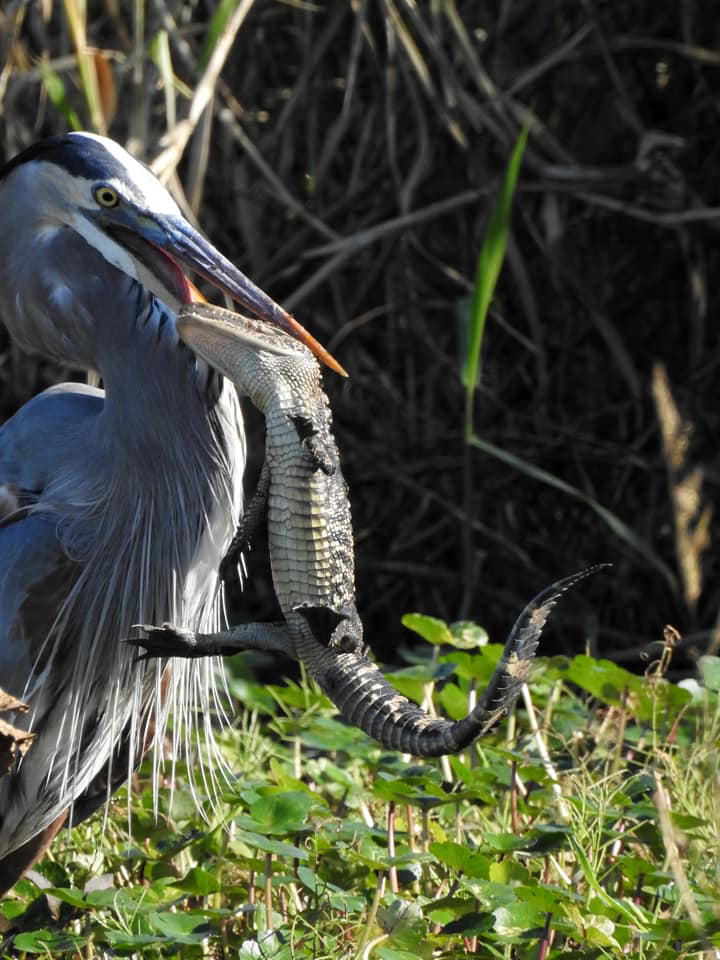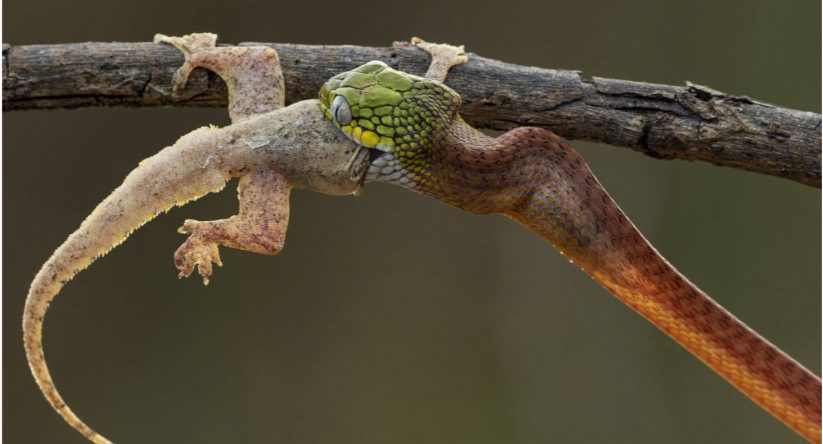Recognized by their distinct black-and-white stripes, zebras sport one of the most iconic coats of the animal kingdom.
At the Masai Mara National Reserve in Kenya, a newborn zebra foal was spotted with very unusual polka-dot markings, instead of the typical striped coat. In fact, this is the first time this particular pattern has ever been witnessed amongst zebras in the Maasai Mara, while others have been observed in Botswana’s Okavango Delta.
Maasai tour guide and photographer, Antony Tira, was the first to spot and photograph this rare black baby zebra with white spots near the Mara River.“At first I thought it was a zebra that had been captured and painted or marked for purposes of migration,” Antony Tira had mentioned to a Kenyan newspaper. “I was confused when I first saw it.”

The cute zebra foal with white spots trotting along with his motherCredit: catersnews
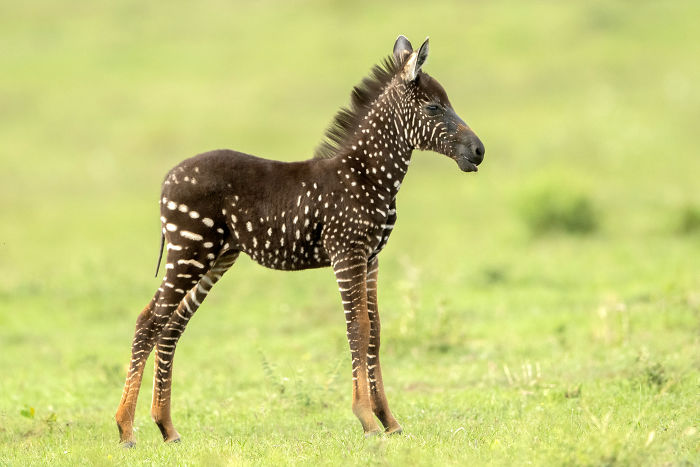
Credit: catersnews
As news of the peculiar zebra foal started to spread on social media, this generated a human “stampede” in the reserve. Eager tourists and photographers were being directed by the tour guides to the lookout area, where they could catch a glimpse of the newborn zebra and his mother. Frank Liu, another professional photographer, spotted the zebra foal the next morning it was first discovered and was able to capture some interesting pictures also.
“I was out looking for rhinos to photograph early that morning”, said Liu. “We spent a couple of hours [searching] around sunrise and failed. That’s when we stumbled upon this mutated zebra that was discovered just the day before.”
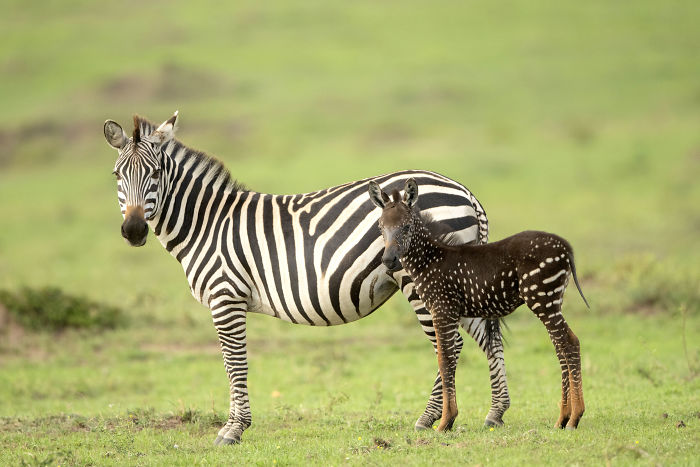
Credit: catersnews
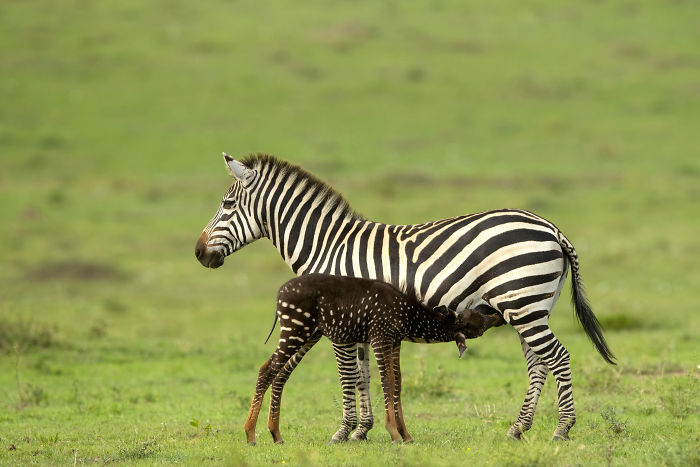
Credit: catersnews

Credit: catersnews
Mr. Liu’s reaction was similar to Mr. Tira’s the previous morning. “At first glance, he looked like a different species altogether,” Mr. Liu had added. Although he’d never observed this particular pattern on a zebra before, Frank Liu realized soon enough that this distinct appearance was due to a pigment disorder.
The adorable baby zebra was named Tira, after the guide who discovered him. The photographer provided some further explanations about this.“The name ‘Tira’ was coined by the local Maasai guide who first found him,” Mr. Liu explained. “There is a general rule within the park; whoever finds an animal of significance gets to name it. Tira was the surname of the guide who found him.”

Credits: Maasai Mara Wildlife Conservancies Association

Credit: Frank Liu Photography
The zebra foal has a genetic condition known as “pseudomelanism,” which causes abnormalities in zebra stripe patterns, as explained by Ren Larison, a biologist at the University of California, Los Angeles. Zebras are basically dark skinned animals, and the origin of their stripes is from specialized skin cells called melanocytes. Their function is to transfer melanin, a group of pigments that provide yellow, red, brown or black color to the hair and skin. Therefore, the hairs that have melanin appear black, and those that do not appear white. But, on rare occasions, something goes awry, and the melanin does not manifest as stripes.

Tira and his mother stay in close proximity to other zebras in their family unit to diminish the chance of predators’ attacks such as lions. Though, Tira still stands out in a crowd.Credit: Frank Liu Photography
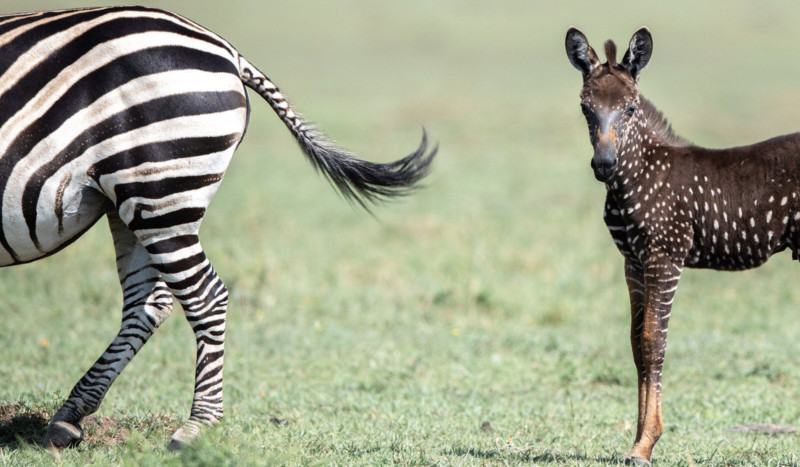
Credit: Frank Liu Photography
“There are a variety of mutations that can disturb the process of melanin synthesis, and in all of those disorders, the melanocytes are believed to be normally distributed, but the melanin they make is abnormal,” stated Greg Barsh, a geneticist and faculty investigator at the HudsonAlpha Institute for Biotechnology.
“This animal is different from most others that have been described as pseudo-melanistic”, Professor Barsh added. “It is probably better described as ‘spotted’ or ‘partially spotted’. In other animals where the biology and genetics are understood, ‘melanism’ refers to increased production of a specific pigment type”.

Tira, the adorable black zebra foal with white spots, stands out in a crowdCredit: Frank Liu Photography
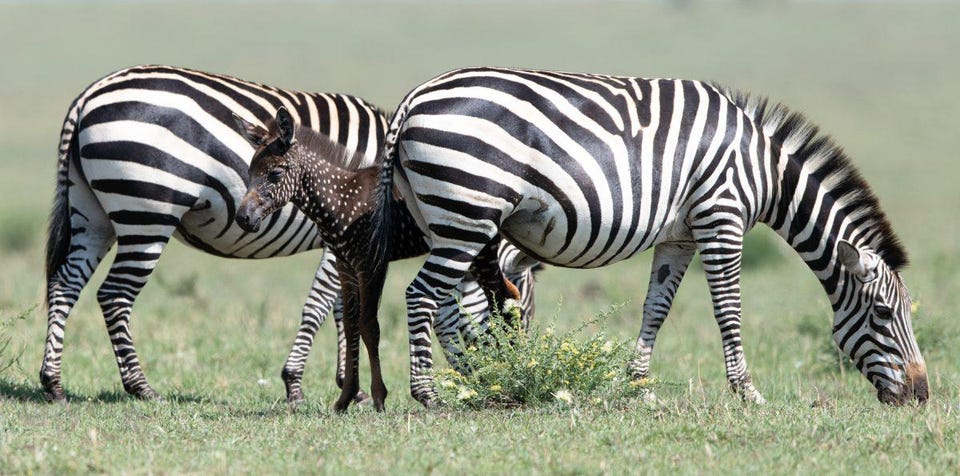
The baby zebra stays close to his motherCredit: Frank Liu Photography
In Tira’s case, is its black coloration and general lack of stripes the result of having too many melanocytes or are his melanocytes producing too much melanin?
What can be observed with Tira is probably something different from a lack of melanocytes because melanocytes are uniformly and ubiquitously distributed throughout zebra skin. As Professor Barsh further explained, in a spotted zebra like Tira, it can be assumed that the melanocytes are still uniformly and ubiquitously distributed, however the melanocytes don’t know where they are on the body. This means that partial spotting in zebras is not an abnormality of melanin synthesis, but instead is an abnormality of melanocyte identity.

Credit: Frank Liu Photography

Credit: Frank Liu Photography

The polka-dotted zebra foal follows his mother, a normally striped zebraCredit: Frank Liu Photography
Sadly for Tira, this particular coat pattern may also signify a reduced life’s expectancy. For long, the function of zebra stripes has been a subject of debate within the scientific community. Whether it is for camouflage, social-signaling or temperature control, there are a number of possible theories out there. However, it is hypothesized that the black-and-white pattern helps to repel biting flies such as horse flies that spread diseases. In Africa, flies are a carrier for a number of diseases that are fatal to zebras, and their thin coats render them more susceptible to bites.

Credit: Lori Labrecque/AdobeStock

Credit: Abdelrahman Hassanein

Credit: Gerlach Nature Photography
Zebras’ mesmerizing stripes seem to disorient flies, and according to some studies, it is more difficult for flies to land on black-and-white striped surfaces than uniformly colored ones. So, without the typical striped coat pattern, Tira is a more convenient target for flies and may be more vulnerable to dangerous bites. As well, with its unusual markings, the baby zebra may stand out from the herd and be easier to spot by predators, as suggested by UCLA biologist, Ren Larison.

Credit: Ratish Nair

Credit: Rahul Sachdev/Caters News

Credit: Mike Dexter
“Research on other species has shown that, while it is harder for a predator to target an individual in a group, it is easier if an individual is different,” said Larison. “I have seen several photos of foals with this specific pattern over the years, but only one photo – from the ‘50s – in which the individual was either a juvenile or adult.”
However, if young Tira can withstand the flies, he might carry on just fine. Zebras, as it seems, are tolerant of difference and research indicates that animals with uncommon coat patterns fit right into the herd.
Src: illuzone.net

